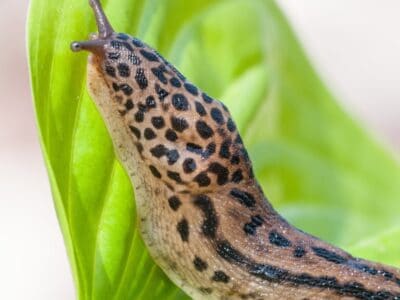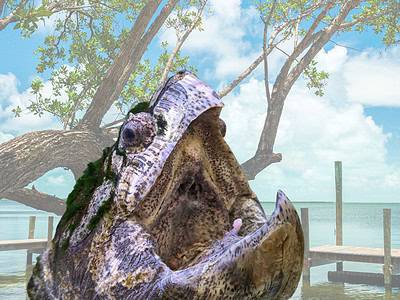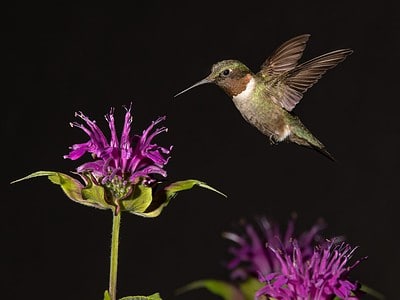Slug
They glide around on one foot, which is aided by the slime they produce
Advertisement
Slug Scientific Classification
Slug Facts
- Prey
- worms, snails, carrion
- Fun Fact
- They glide around on one foot, which is aided by the slime they produce
- Other Name(s)
- Land slug
- Gestation Period
- 3-6 months
- Litter Size
- 500 per year
- Habitat
- gardens, foliage, wood and debris
The classification of Slug refers to one of the 100s or possibly 1000s of species of gastropod mollusk found throughout the world.
The term slug is polyphyletic, meaning it applies to a group of organisms that are generally linked under one name based on their shared characteristics and not due to sharing a common ancestor. Many different species from several different taxonomic families share the common name of a slug. The name means any sort of terrestrial gastropod that does not have a shell or a mollusk having little to no shell. Other mollusks include oysters, squid, and clams. Though slugs are not poisonous, they do often carry parasites that can be harmful to pets and humans.
5 Incredible Slug Facts!
- They have a top speed of .3km/hr
- Slugs can lay up to 500 eggs per year
- Slugs are hermaphrodites, so any slug can lay eggs
- The body of their body is called a foot
- Exist both on land and in the sea
You can check out more incredible facts about slugs.
Slug Species, Types, and Scientific Name
The common name and classification of slug refer to so many different animals, it would be impossible to list them all here. Some common species of slug include the Garden (Arion hortensis), the Banana (Ariolimax), the Leopard (Limax maximus), the Black (Arion ater), and the Kelly Slug (Geomalacus maculosus). Generally, they are referred to by the common scientific name Gastropod.
Appearance: How To Identify Slugs
These gastropods can be anywhere between half an inch to several inches long. They are typically oblong, being thicker in the center and tapered at each end. They have tentacles that look like antennae, on which they have eyes. They have a slimy, gelatinous appearance and feel to them. They may be a color similar to lawn debris, including gray, green, brown, black, and yellow. A very few species can even be red or orange. Some have dots or other patterns on their skin. They leave slime trails behind them which are often visible even when the creatures themselves are undetected.
“Slug vs Snail”
The primary difference between a slug and a snail is that a snail has a spiral-shaped shell into which its body can often retract, though this is not true of all species. Snails have a coiled body, whereas a slug’s body is straight. They both have eyes on stalks and they both travel on slime.

©MMCez/Shutterstock.com
Habitat: Where to Find Slugs
These slimy critters can be found all over the world. They are commonly found in damp areas, such as under rocks, logs, and ground debris. They will also hide under raised planters and decks. When foraging, they can be found on porches and even climbing on containers, especially if food is kept inside. They like feeding on plants and debris and so will be found anywhere those can be found.
Diet: What Do Slugs Eat?
Most species of these mollusks are omnivores, feeding on both plants and animals, but there are also herbivorous and carnivorous types. Some are even detritivorous, meaning they consume only plant and animal waste. The majority of species eat mostly plant matter, but they will also sometimes consume worms, snails, or the remains of dead animals. Some can also be found feeding on fungus.
If you’ve ever wondered what slug poop looks like, check out this article on everything related to slug poop.
Prevention: How to Get Rid of Slugs
Getting rid of these once they’ve invaded is a tough proposition. Many of the commonly used methods are either dangerous for humans and pets or actually result in drawing more of the creatures to the area because of the smell of dead slugs. Beer traps are often recommended as a home remedy, but this too draws in more animals than it kills. Though salt will kill a gastropod this is not a recommended practice.
The best way to truly rid a garden of slugs is to bring in a predator, such as chickens, ducks, or turkeys. If that is not an option, the best solution is likely collecting them in plastic bags and putting them in the freezer before disposing of them in a covered trash bin. This isn’t a nice solution, but it decreases the smells that will attract new ones and is not dangerous to other wildlife. Alternatively, protect the garden itself with copper mesh and tape or slug-proof plant covers.
View all 293 animals that start with SSlug FAQs (Frequently Asked Questions)
Are slugs harmful?
They are not poisonous, but they do carry parasites that are harmful to pets and sometimes humans.
Can a slug bite you?
They have teeth, which can mildly damage your skin if they scrape you.
Where do slugs live?
In damp areas such as gardens, forests, and meadows.
Is it OK to touch a slug?
It won’t harm you to touch one of them, but it isn’t recommended as they carry parasites and other organisms that can make you sick. If you touch one, wash your hands.
What is a slug?
A slug is a shell-less gastropod in the same family as oysters.
How many noses does a slug have?
They have four, two of which double as eyes.
What is a slug unit?
This unit is a measurement of mass equal to ~32 pounds of force.
What happens when you put salt on a slug?
The salt slowly sucks all the water out of their skin until they die or until they produce enough slime to remove the salt.
Thank you for reading! Have some feedback for us? Contact the AZ Animals editorial team.
Sources
- ITIS / Accessed September 29, 2021
- Britannica Kids / Accessed September 29, 2021
- Natural History Museum / Accessed September 29, 2021
- RSPB / Accessed September 29, 2021
- David Domoney / Accessed September 29, 2021
- Corry's / Accessed September 29, 2021
- Pets on Mom / Accessed September 29, 2021
- Wikipedia / Accessed September 29, 2021
- India Today / Accessed September 29, 2021
- Wonderopolis / Accessed September 29, 2021
- Slug Help / Accessed September 29, 2021
- The English Garden / Accessed September 29, 2021
- Discover Wildlife / Accessed September 29, 2021
- Oregon State University / Accessed September 29, 2021
- The Living World of Molluscs / Accessed September 29, 2021
- Pest Control / Accessed September 29, 2021
- Country Life / Accessed September 29, 2021


















